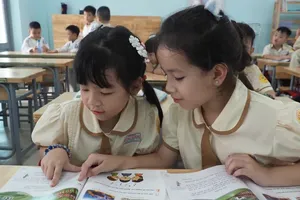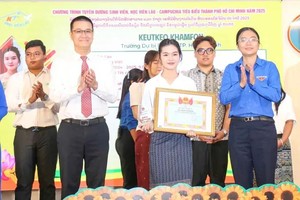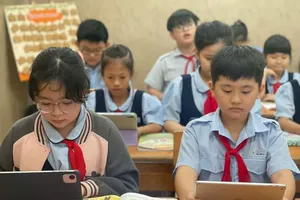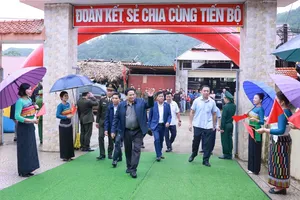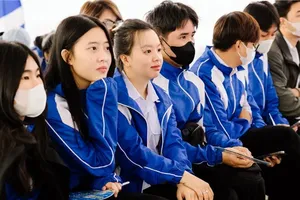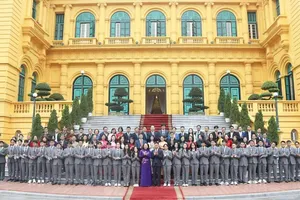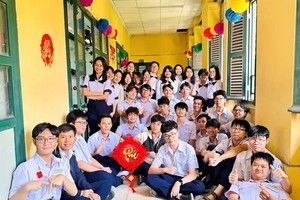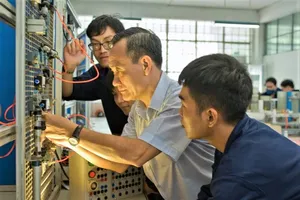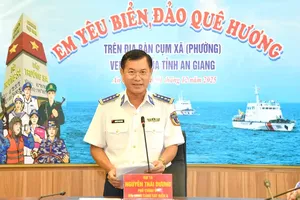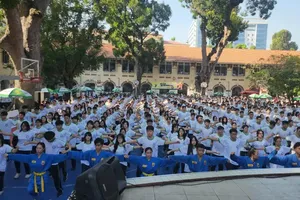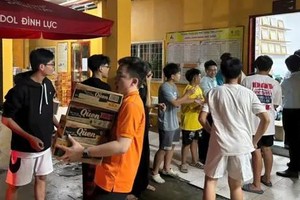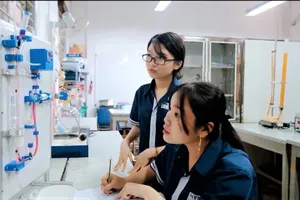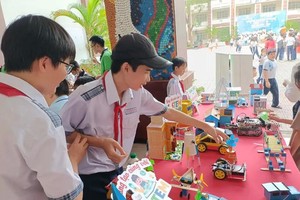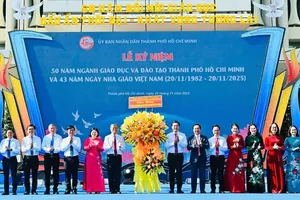
Former President of HCMC University of Foreign Languages – Information Technology (HUFLIT) Huynh The Cuoc reminisced that when the State's policy on mobilizing social resources for education allowed the creation of private universities, in 1992, he and his colleagues in education applied for a license to open HUFLIT, whose main campus is in District 10.
They received the support of the then-leaders of HCMC. The initially limited land was then expanded. The university pays annual land rent and taxes in full, with the main investment from a businessperson at first. After 33 years of development, the university now has a new campus in Hoc Mon District, with a student population in the tens of thousands across undergraduate and postgraduate programs.
Nguyen Tat Thanh University, evolving from a vocational school, has become a reputable private university. Starting with limited training for a garment company, it has invested over VND2 trillion (US$79.7 million) in facilities and equipment, now educating thousands. The university has diversified into a multidisciplinary institution with 14 faculties and 54 curricula, spanning various disciplines and serving over 25,000 students.
Supported by preferential tax policies, city funding, and land allocation, Nguyen Tat Thanh University has expanded significantly. Beyond its main campus, it has invested over VND500 billion ($20 million) in a new campus and over VND1.1 trillion ($43.9 million) in a Technology Development Center. University President Tran Ai Cam credits municipal policies for fostering private higher education growth, empowering these institutions to contribute significantly to policy evaluation and the provision of skilled professionals for the city's development.
Similarly, Saigon Technology University, Hoa Sen University, Van Lang University, and Van Hien University have also received land allocation support from HCMC for educational purposes, facilitating the development of their facilities in District 1, Binh Thanh District, and Binh Chanh District. Beyond a preferential tax policy of 10 percent applied to business income from activities in education, vocational training, healthcare, culture, sports, and environment via social resource mobilization, the city has also facilitated access to stimulus loans for development investment.
According to Assoc Prof Dr Nguyen Kim Hong, Vice President of the Vietnam Association of Former Teachers, from their inception amidst financial, staffing, land, and infrastructural constraints, many private universities in HCMC now boast faculties numbering in the thousands. Many institutions have invested in modern facilities, with some, such as Van Lang University, Nguyen Tat Thanh University, and HCMC University of Technology (HUTECH), achieving international star ratings.
Surveys of several non-public universities in HCMC reveal that a significant number have experienced robust growth, rivaling their public counterparts. Beyond revenues reaching trillions of VND, many private universities possess modern infrastructure, and their investment in facilities, laboratories, and doctoral-level faculty is among the highest in the country. Numerous institutions attract leading industry experts and renowned international scientists.
HUTECH President Prof Dr Ho Dac Loc emphasizes the university's active role in scientific research and technology transfer, alongside its training and human resource provision. HUTECH’s researchers have consistently undertaken numerous applied projects addressing HCMC’s socio-economic development needs. The university’s commitment to innovation is evident in its co-founding membership of the HCMC Center for the Fourth Industrial Revolution (C4IR) in 2024, further driving its investment in R&D to support national industrialization and modernization.
HUTECH’s contributions extend to cultural preservation, exemplified by the completion of the “Digitalization of Ho Chi Minh Museum Space – HCMC Branch” project. Furthermore, students actively participate in high-impact practical projects, including the Saigon – Cho Lon Urban History Museum and The Nexus Commercial and Office Center Design projects, demonstrating the university’s commitment to real-world application and community engagement.
The Council of Principals of Universities in the area is an initiative of HCMC leaders to promote linkages between universities (both public and non-public) to leverage their role in policy consultation and evaluation, actively contributing opinions, participating in policy critique, and engaging in conferences and scientific seminars organized by the city.
It also promotes increased organization of science and technology activities and innovation. Council members within specific industry clusters conduct scientific and technological research as commissioned by the HCMC People's Committee, effectively implementing programs and projects in coordination with city departments and agencies in training human resources at an international level.
The growth of private universities, alongside the public university system, has contributed to establishing HCMC as a higher education hub, facilitating scientific research and technology transfer for the socio-economic development of the city and the southern region generally.
Higher education development planning in three parts: East, South, and Northwest
Head Nguyen Anh Tuan of the General Planning Management Division under the HCMC Department of Planning and Architecture informed that universities and colleges in HCMC account for more than 60 percent of the total number of higher institutions in the region. Alongside the public university system, which plays a pivotal role, the non-public one is rapidly developing, participating in training high-level human resources, including postgraduate training and international joint programs.
During the research and adjustment of the HCMC Master Planning to 2040 and vision to 2060, the education network in the city is being studied and reviewed to propose a roadmap for the mobilization of social resources for education and strengthen solutions to increase educational land funds.
Accordingly, this network is concentrated into clusters in suburban areas and prioritized for development in three parts of East, South, and Northwest. This orientation aims to develop the network in a balanced way while training human resources to support interaction with hi-tech parks and industrial services being formed in the future.
The network of higher education and vocational training continues to adhere to the three previously planned educational center clusters.
- The first is the eastern HCMC education and training center cluster, comprising Vietnam National University-Ho Chi Minh City and several facilities in Thu Duc City.
- The second is the southern education and training center cluster, encompassing the An Phu Tay - Hung Long University Urban Area (Binh Chanh District), Hung Vuong University Village, Phong Phu University Village, Long Thoi Concentrated University Area, Nha Be, and other education and training institutions concentrated on Ring Road 3.
- The third is the northwestern education and training center cluster, including the Vietnam International University Urban Area in Hoc Mon District (comprising education and training functions and other auxiliary functions) and several other education and training institutions.
